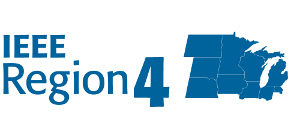The CVARC Hamfest Hosted by the Cedar Valley Amateur Radio Club In Cooperation with the Iowa Antique Radio Club, The American Radio Relay League (ARRL), Institute of Electrical and Electronics Engineers (IEEE), Collins Amateur Radio Club, Collins Collectors Association, Eastern Iowa DX Association, Quarter Century Wireless Association, Iowa QRP Club AND MORE!! https://w0gq.org/hamfest/ BREAKING NEWS – We have confirmed that Associated Radio will be at the Hamfest, so those looking to pick up new equipment will want to check them out! Details: - Kids under 18: FREE - Adults: $10 - Flea Market Tables: $10 ($15 after July 1) - Outdoor Fleas: Free! - Commercial Vendors: $10/table w/2 free tickets - RV Camping: $20/night - Offsite camping available: Pinicon Ridge Park - Main Door Prize Drawing at 2:00 PM - VE Testing at 2:00 PM FEATURING: 39 Acre Show Site, 6+ Acre Free Parking, Camping On-Site, Indoor & Outdoor Flea Markets, Build Projects, Linn County 4-H Food Vendors, Live Demonstrations, Door Prizes galore!! ARRL VE Testing – 2:00 PM (Contact Al Butler, [email protected], for information) Excellent on-site food supplied by Linn County 4-H Clubs and Linn County Pork Producers. Agenda: 8:00 - Analog Expansion for the Raspberry Pi presented by Charley Snodgrass 9:00 - Homebrew Show and Tell presented by Barry Buelow 10:00 - From cockpit to ham shack: understanding and decoding ACARS communications presented by Paul Cowley 11:00 - Iowa Repeater Council presented by Paul Cowley 12:00 - TBA Linn County Fairgrounds, 201 Central City RR, Central City, Iowa, United States, 52214

